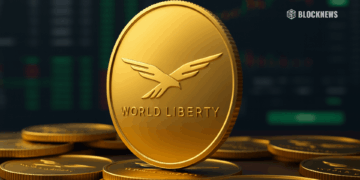- Alpenglow enters voting phase: Solana’s new consensus proposal could replace TowerBFT with a faster, more resilient system. Validators vote with stake-weighted tokens, needing two-thirds approval and a 33% quorum to pass.
- Rotor protocol boosts performance: Rotor shortens block finalization to as little as 100–150ms and replaces Turbine with a relay-based design, cutting network hops and improving fault tolerance with its “20+20” resilience model.
- Impact on apps and market: Faster confirmations and lower costs benefit DeFi, gaming, and payments, while analysts see potential for renewed SOL demand if adoption aligns with broader market conditions.
The Solana network has officially entered a crucial moment. Its long-awaited Alpenglow consensus proposal is now in community voting, aiming to replace the old TowerBFT system with something faster, sturdier, and more adaptable. At the heart of this upgrade is a new block propagation protocol called Rotor, which could have massive implications for apps, validators, and even SOL’s market performance.
Community Vote and the Mechanics Behind It
Voting kicked off in epoch 840 and will wrap up by the end of epoch 842, with ballots tied directly to validator stake weight. Participants can vote Yes, No, or Abstain — but for the proposal to pass, Yes votes need to hit at least two-thirds of total Yes + No votes. Abstains still count toward quorum, which sits at a minimum of 33%.
Alpenglow isn’t a minor tweak; it’s a structural overhaul. Instead of relying on Proof-of-History paired with TowerBFT, this model leans into speed and resiliency. Rotor, the centerpiece of the proposal, introduces a way to finalize blocks in as little as 100–150 milliseconds if validator participation clears 80%. In practice, that’s lightning fast. Alongside Rotor, validators will now pay a fixed admission ticket fee of 1.6 SOL per epoch — burned, not recycled — to keep economic discipline intact.
Rotor’s Impact on Solana’s Network Flow
Rotor is designed to ditch Solana’s current Turbine system in favor of a cleaner relay structure. Where Turbine broke data into tree-like layers, Rotor keeps things flatter, reducing hops and smoothing out latency issues. Relay nodes are chosen by stake weight, which spreads out bandwidth responsibility and cuts back on bottlenecks.
The protocol is also built with resilience in mind. Even if 20% of validators act maliciously and another 20% go offline, the network keeps moving forward. This “20+20” model adds a fault-tolerant safety net, reducing the risk of sudden stalls in high-volume environments.
What It Means for Developers and SOL’s Price
For DApps, the difference could be night and day. Faster confirmations mean traders face less slippage, gamers see smoother interactions, and social platforms cut down on lag. Validators save on costs thanks to off-chain vote aggregation, while users indirectly benefit from a leaner, more responsive chain.
Naturally, market watchers are curious about SOL’s price impact. Big network upgrades often act as catalysts, attracting fresh developer attention and potentially driving demand. But analysts warn that results will depend not just on the upgrade’s success, but also on how broader market conditions shape up. If adoption aligns with performance, Alpenglow could push Solana further into the spotlight — and maybe closer to that elusive ETF buzz that’s been circling.














